Belgium once again has a new lambic blendery, and it’s a really good one! The blender and owner, Senne Eylenbosch, comes from a family of lambic makers and farmers in the heart of Belgium’s lambic country. The new place is called Het Boerenerf Eylenbosch. Their Facebook page is here.
I visited the farm, lambic blendery, and tasting room in the village of Huizingen on a beautiful sunny day in September 2021, and Senne told me about the history of the place: “The first brewery on this site was founded by farmers Joannes Cammaert and his wife. In the rise of the geuze in the 19th century, many farmers started brewing, and some families still do,” Senne remarked.
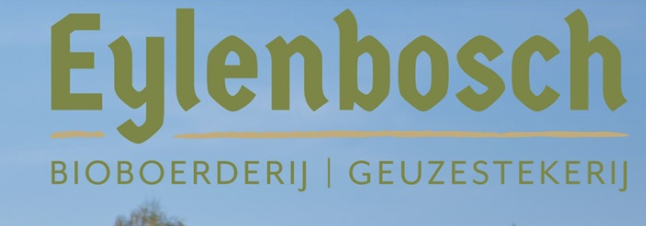
Senne continued: “The first brewery, Brouwerij Cammaert, existed from 1864 to 1895. My great great grandfather, Martinus Josephus Eylenbosch, married Anna Maria Cammaert, who was Joannes Cammaert’s great-granddaughter, in 1874. Since then, the farm and brewery has continued under the name Eylenbosch.”
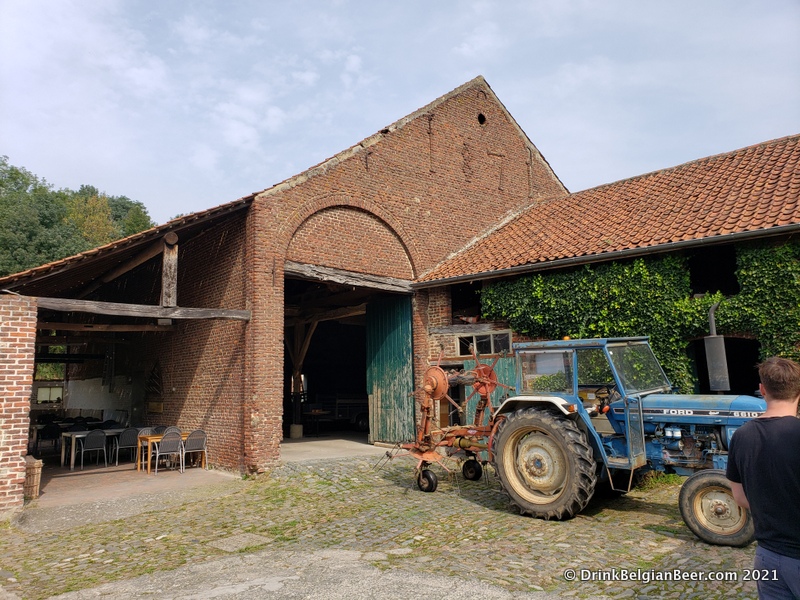
In 1871, Senne’s great grandfather built a good sized barn made of brick. By late 2021, Senne had completed an extension to the historic barn, to add more lambic barrel aging/cellaring space. “The highlight of 2021 for me was the extension of this barn. Also, my parents used to have barnyard festivals in it. So I think this could be a great space to have beer release events as well,” Senne commented.

Construction of a new, larger Eylenbosch (Huizingen) brewery began in 1871 and was completed in 1876. Important note: Senne’s branch of the Eylenbosch family are distant relations to the family who owned the Eylenbosch brewery in Schepdaal. Senne says: “My family lineage to Eylenbosch Schepdaal: my great-great grandfather was a nephew of the family in Schepdaal, and the Cammaert brewery only had a daughter…”
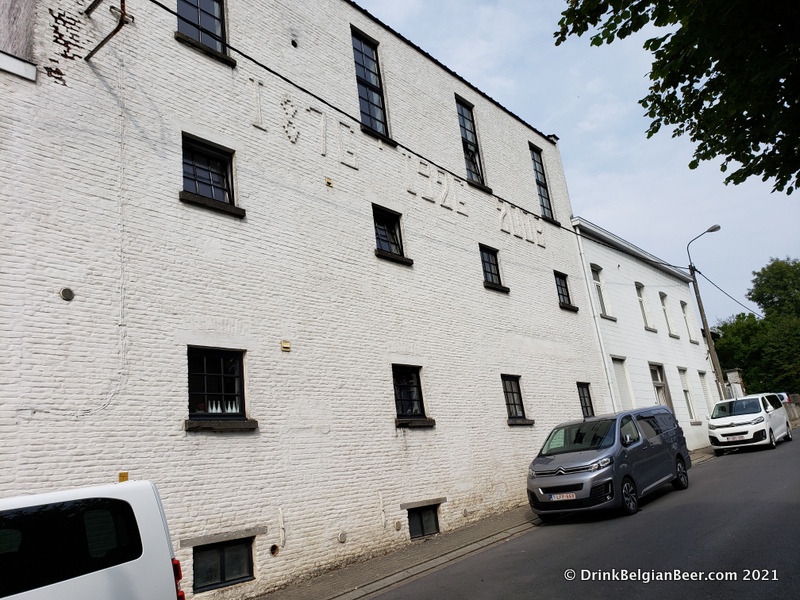
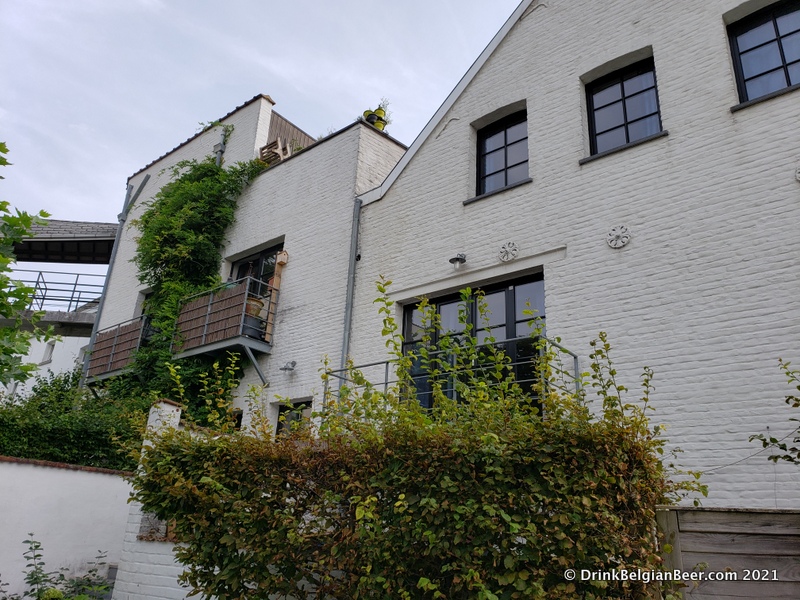
Brouwerij Eylenbosch (Huizingen) brewed lambic and produced geuze. The old buildings are just around the corner from the current farmstead and blendery. “The brewery existed from 1876 until 1965,” Senne says. “Martinus Eylenbosch died in 1922, and left the brewery and farmstead to his sons, Jan-Baptist Eylenbosch and Georges Eylenbosch.”
As to the lambic style of beer, it was popular up until the 1960’s, by which time sweet drinks like sodas had changed drinker’s tastes. Declining sales, and the rise of some very large, industrialized lambic breweries, made it tough to make a living. “So my family stopped brewing in 1965. Then, the brewery became a sort of warehouse and distribution center for the beers from Brouwerij Wieze, and beers from other breweries that my family started selling. The old brewery was used to supply the same cafes on the same delivery routes as before. Later, from around 2006 to 2008, much of the old brewery was converted into loft apartments,” Senne says.
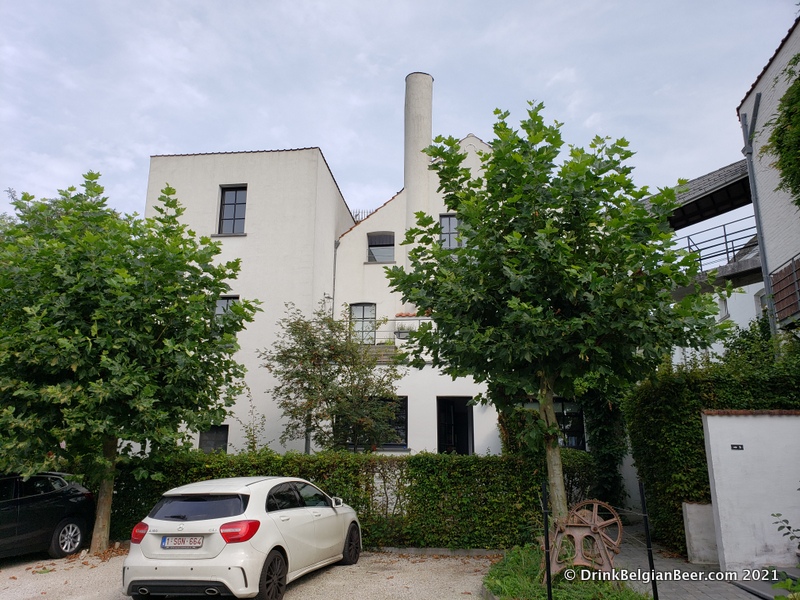
While you cannot visit the old brewery, you can walk right up to it and around it.
Senne added: “Even after the brewery closed, our family never stopped farming here. We continued to raise livestock, such as cows, and to grow various grains and fruits, and to manage a dairy. In fact, we also make gourmet ice cream here!”
Yes, Het Boerenerf Eylenbosch is also an ice cream salon, also called an ijssalon in Dutch. While I didn’t have the chance to taste any of these specialties during my first visit, I look forward to in the future!
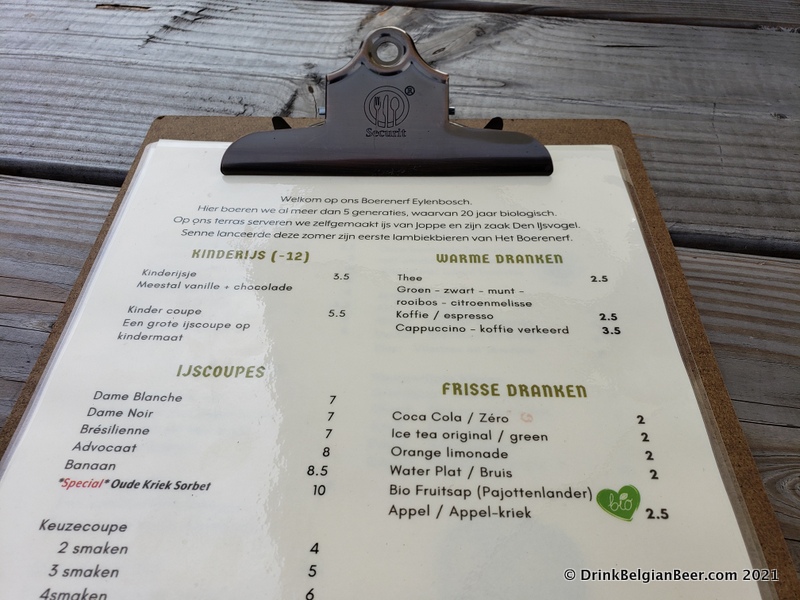
Senne’s parents, Veerle Samyn and Paul Eylenbosch, started farming organically in 2000. Senne remarked: “They saw that people were becoming more interested in small farmers. Nowadays, consumers think more about what they eat and drink, and show more interest in the added value that a small business can offer. Also, consumers are more willing to pay more for a locally made, organic product. Both our ice cream and lambics are such locally made products.”
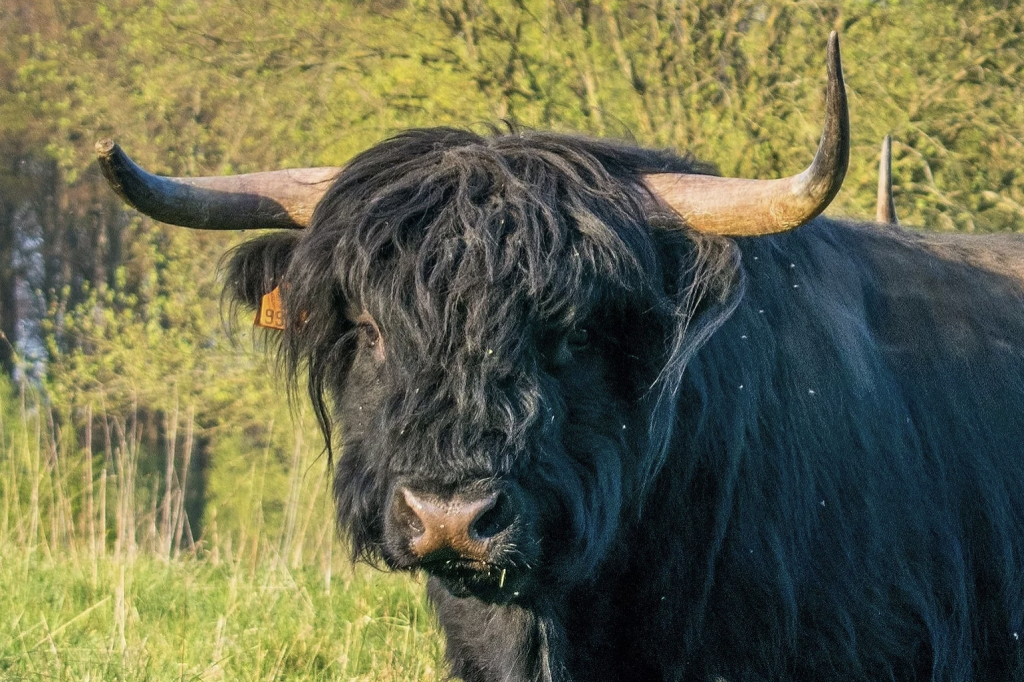
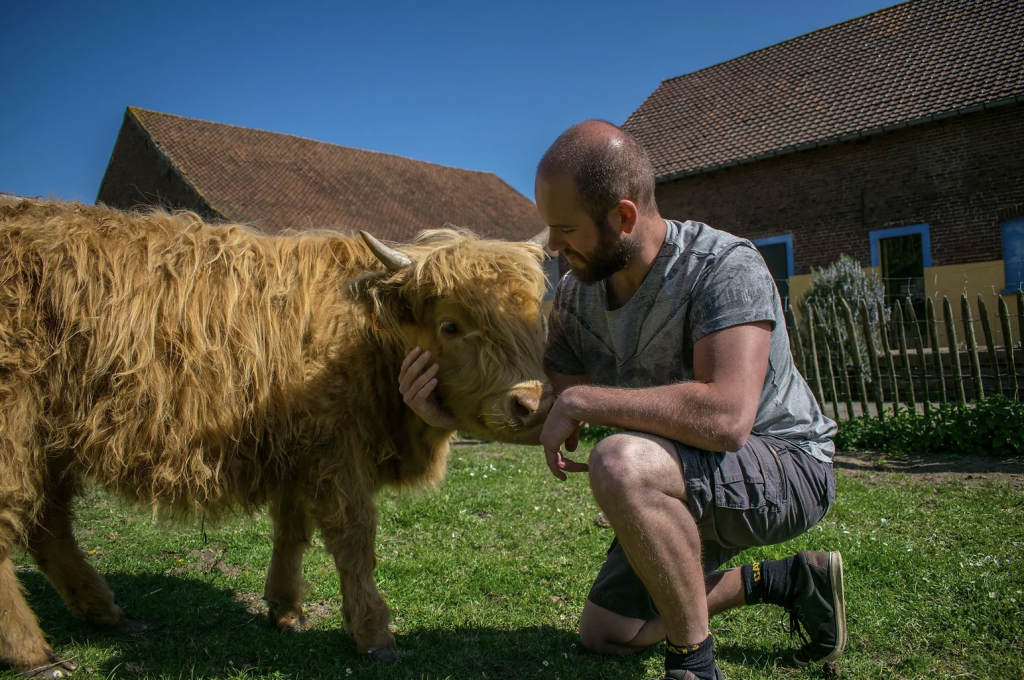
Senne added: “We raise the “Highland” here, which is a Scottish breed of rustic cattle. We call them our Scottish Highlanders. They are a very hearty breed, capable of withstanding very cold weather and thriving. The eat grasses and herbs, and cut through shrubs, and fertilize the soil. They eat tree shoots, and push down young trees, and create a rich biodiversity. Grazing, in fact, motivates biodiversity.”
“In fact, the name ‘boerenerf’ means farmyard or farmstead in English,” Senne says. “So we are ‘The Farmstead Eylenbosch’,” he added.
Senne’s background is very interesting. He graduated from secondary school (which is the equivalent to the years of Junior High School and High School in the U.S., from the ages of 12 to 18) with his thesis on the “Great Flying Deer” which is formally known as the Stag Beetle. This is the largest insect in Belgium, and is only found in a handful of places, such as Huizingen. This unique beetle, related to the rhinoceros beetle and the dung beetle, lives for at least three years as a larva in dead wood. In June of each year, they emerge from the earth as adults for only a few weeks to reproduce.
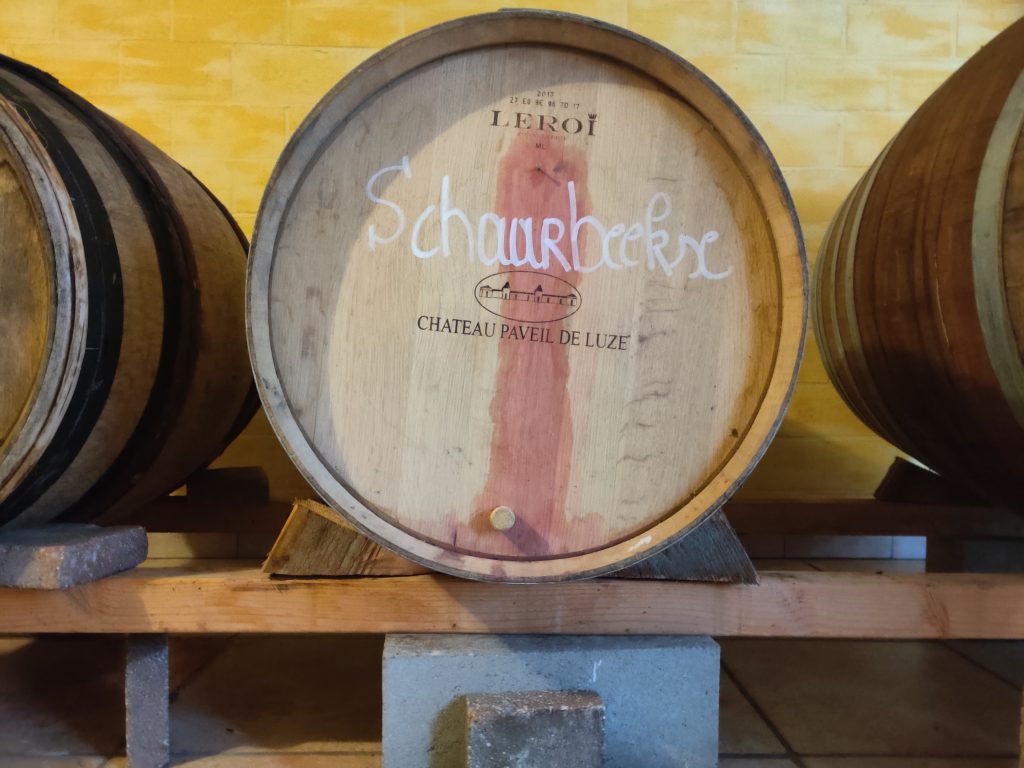

But it’s lambic you really want to know about, right? Then read on. Senne worked for the famed Brouwerij 3 Fonteinen in Lot for three and a half years, where he learned to blend both fruited lambics and oude geuze. He says: “I always wanted to bring lambic making back to this farmstead, and I started converting some of the space to prepare for lambic maturation and blending in 2019. Towards the end of April 2020, I added the first batch of wort, from 3 Fonteinen, to some barrels. Since then, I have added wort from Brouwerij Lindemans and Brouwerij De Troch.”
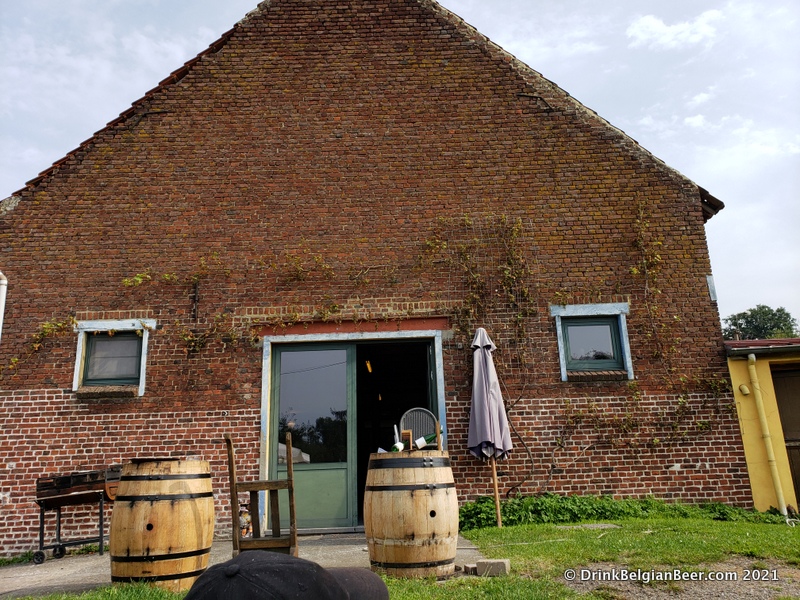
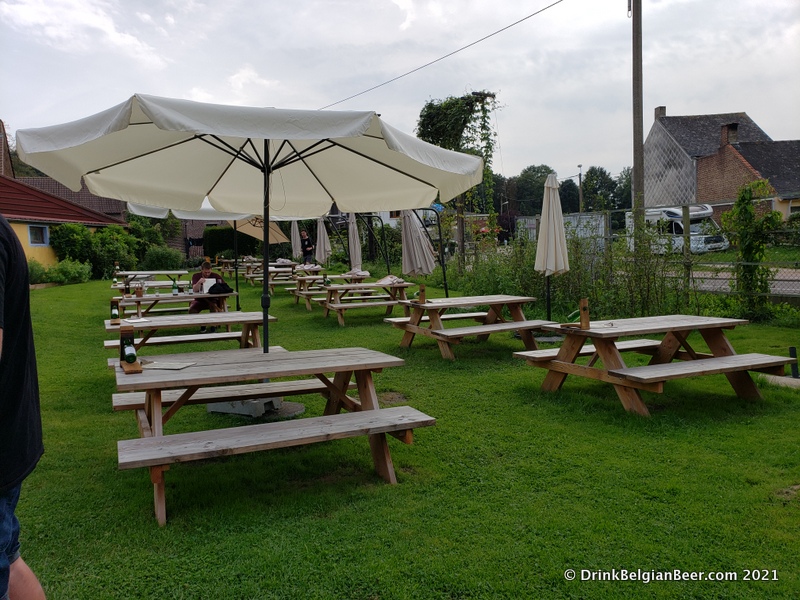
Senne continued: “The first batches of fruited lambics that we released in 2021 were mostly fruits blended with that first wort from 3 Fonteinen. These included a couple blended with cider.” The first six brews officially sold by Het Boerenerf Eylenbosch were Kweepeerlambiek; Kweepeerlambiek met Cider; Oude Kers; Oude Kriek; Oude Kriek met Cider; and Oude Schaarbeekse Kriek.
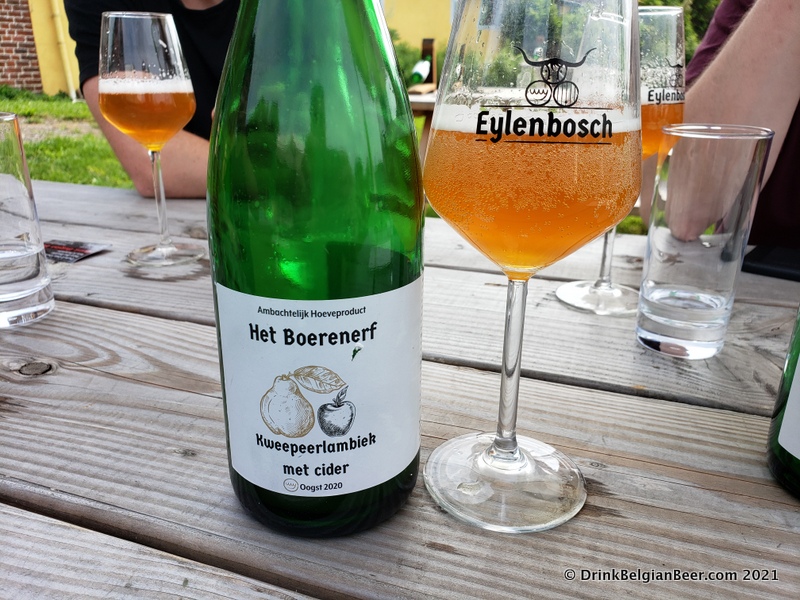
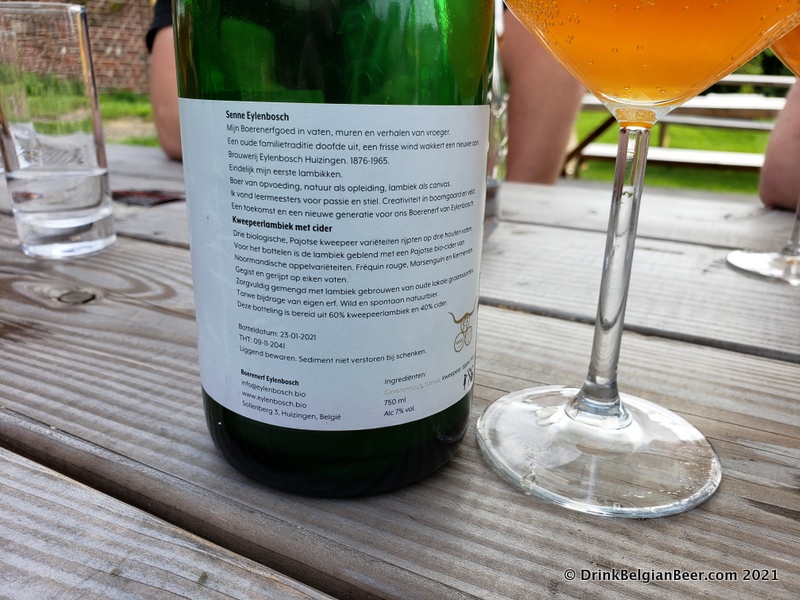
I had the pleasure of tasting three of these brews during my visit to Belgium. The first was Kweepeerlambiek met Cider. So, just what is a Kweepeerlambiek? A “kweeper” is the Dutch word for a quince, which is a pear-like fruit that, when ripe, is very similar in color to a golden apple. Three different varieties of quinces, namely Lescovacz, Mamuth and Vranja, were all grown in Belgium’s Payottenland. They were steeped with lambic in three different oak barrels. These were all then blended together with three different cider varieties from Normandy (but which were grown in the Payottenland.) Kweepeerlambiek met Cider was bottled on 1/23/2021, meaning the lambic was about nine months old at the time.


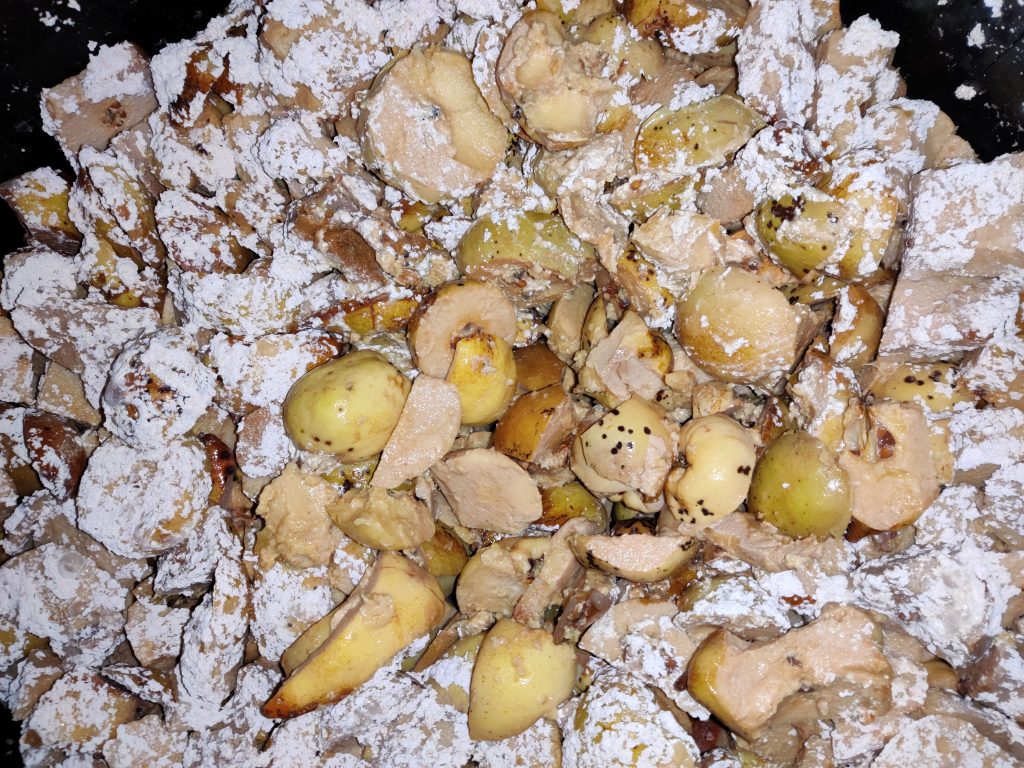
The result is an incredibly refreshing, fruity beverage that borders the fine line between being a quince/cider and a beer. This first batch contained about 60% quince and 40% cider. It clocks in at 7% abv. “As you see with this, we intend to make some unique beverages here. Usually with lambic as the ‘canvas’ but often with fruits like these grown right on our farm, or somewhere nearby here in lambic country,” Senne commented.

Next up was Oude Kriek, one of my favorite styles. This one featured a prominent but beautiful fruit aroma on the nose and medium fruit intensity in the taste, and some classic lambic funk. This Oude Kriek was made with a blend of two varieties of Flemish cherries, macerated with lambic from 3 Fonteinen.



I later tasted the Oude Kers, a blend of lambic macerated with sweet, black cherries. Kordia cherries of the Limburg and Hoeilandse Hedelfingers varieties were used. This produced a beer with a mild blend of tartness and sweetness, with 7% abv. While not quite as intense as the Oude Kriek, it was a well-made kriek lambiek.
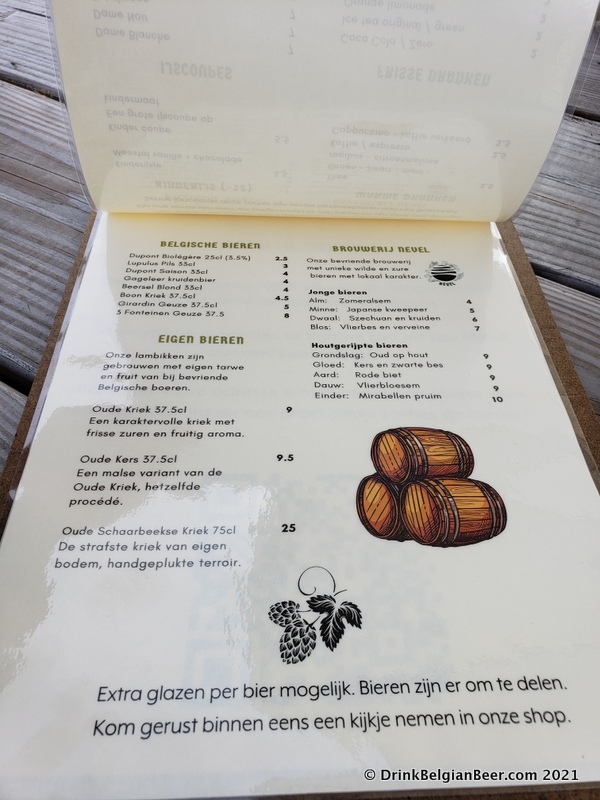
All of these lambic-based fruit beers were produced in an artisanal way, and well-executed. It is evident that Senne has a deft touch with creating such blends. He says: “All of the products we make here come from the soil of the Payottenland. We want to be as local as possible, and as bio (organic) as possible.”
Senne has more surprises up his sleeve for the future: “I now have about 60 barrels in sizes ranging from 150 to 750 liters,” he remarked in early March 2022. “Our first Oude Geuze should debut sometime this year. Also, we have other new fruited beers planned for release sometime around May,” Senne says. One of these will likely be Pommace. “You’ll have to come back in the spring and taste it to see what it is,” Senne tells me.
Note that all sales of the Het Boerenerf Eylenbosch brews are done on site only. There is no distribution.
The tasting room and patio are closed in winter. “We expect to reopen in May, but that is not certain yet. It could be earlier. People can stay up to date on the goings on here on our Facebook page and website,” Senne says.
Het Boerenerf Eylenbosch is located at Sollenberg 3, Huizingen. The postal code is 1654. Telephone is 32 471 310 948. The opening days hours for 2022 will be listed closer to when the patio and tasting room open.
I strongly recommend lambic lovers to visit this life-enhancing farm, lambic blendery, and ice cream salon!
For anyone interested in visiting Het Boerenerf Eylenbosch, as well as many other places, and Toer de Geuze itself, BelgianBeerme! Beer Tours is hosting the “Wild & Spontaneous Beer Tour of Belgium” from April 25-May 2, 2022, and will likely visit this superb new lambic producer. See here for more details.
For more information about tourism in the Province of Flemish Brabant, see their website here.

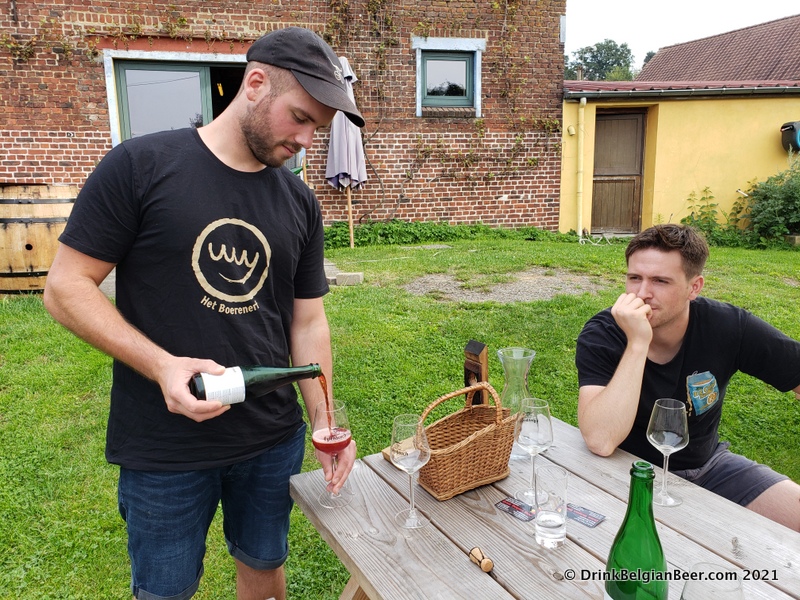
Leave a Reply